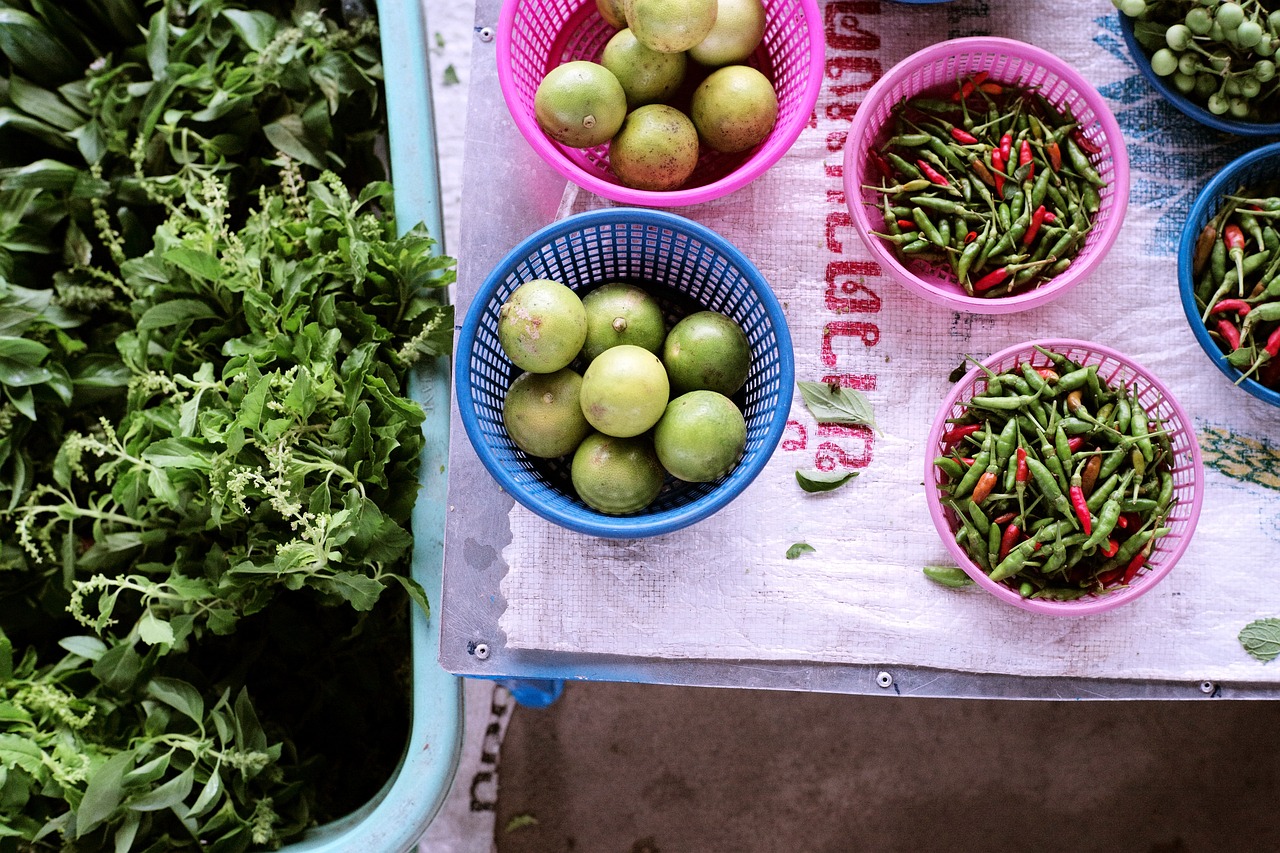Thai Basil
Overview
Thai Basil is an aromatic herb hailing from tropical climes, loved for its ability to enhance Southeast Asian dishes with its unique flavor. Thriving in warm, fertile conditions, this staple in culinary and traditional medicine circles is a gardener’s delight when given the right care and sunshine. Despite its tender perennial status, it’s often grown annually and revered for potential health benefits, although these benefits are still under scientific scrutiny.

Characteristics
Known for its aromatic leaves, unique flavor in Southeast Asian cuisine, and potential health benefits.
Region
Typically found or grown in tropical and subtropical regions.
Natural Habitat
Typically found in warm, tropical regions; not specific to fields, forests, or swamps.
Cultivation
Prefers full to partial sun, regular watering, and fertile, well-draining soil with a neutral pH.
Uses and Benefits
Thai basil offers a fragrant twist in the kitchen, its licorice-like flavor a staple in Southeast Asian cuisine for everything from stir-fries to soups. But the charm of this herb extends beyond the palate—its potential health benefits spark interest, although scientific research is yet to firmly establish these claims2.
Rich in essential oils and compounds, Thai basil may contribute to improved wellbeing through its use in traditional medicine practices. Whether you’re tossing it into a spicy curry or steeping it for a comforting tea, this aromatic herb might just be as good for your health as it is for your taste buds. Just remember, while the excitement around Thai basil’s health effects is compelling, we’re still waiting on science to give us the full story.
Cultivation Tips
Growing Thai basil successfully starts with sowing seeds or planting cuttings in fertile, well-draining soil. To get your seeds off to a good start, gently rub the heads between your hands over a bowl to free the seeds, then store them in a sealed container away from light until you’re ready to plant1. Aim to plant seeds no more than twice their diameter deep4—this provides the ideal depth for seedling growth.
Ensure your Thai basil gets full to partial sun and keep the soil temperatures between 70˚F and 90˚F for optimal growth, but don’t worry if it occasionally dips to 50˚F; your plant can handle it3. When mid-to-late summer arrives, watch for blooms—this signifies your plant’s thriving and ready to be used in a slew of flavorful dishes or enjoyed for its aromatic presence in your garden. If the colder months are approaching, consider moving your plant indoors to protect it from the frost3. And remember, while not specific to Thai basil, growing it alongside veggies like tomatoes and peppers could benefit your garden’s overall health.
Seasonal Considerations
The rhythm of the seasons plays a pivotal role in the lifecycle of Thai basil. As this herb basks in warmth, it flourishes during the balmy stretch from mid-to-late summer.5 To keep your Thai basil thriving, it’s essential to remember that it’s not a fan of the cold. So when temperatures start to dip and winter whispers its frosty threats, consider escorting your green companion indoors.3 This simple shift can make all the difference, transforming what could be an annual farewell into a perennial reunion with your fragrant friend.
Remember, a bit of extra attention as the seasons turn can sustain the lush, aromatic leaves that are so cherished in kitchens far and wide.
Issues and Troubleshooting
While Thai Basil is a robust herb loved in kitchens for its aromatic leaves, it isn’t without its challenges. Over or under-watering can lead to root issues, such as rot or stunted growth—consistent moisture balanced with well-draining soil usually does the trick. Light is another factor to juggle; too little sun impairs growth, while too much can scorch the leaves. Aim for that sweet spot of full to partial sun exposure.
Then there’s the temperature to consider. Being a tropical plant, Thai Basil enjoys the warmth, ideally between 70˚F to 90˚F. Should temperatures dip too low, especially nearing frost, take measures to shield your basil or bring it indoors[^2^] 3.
Poor soil conditions can also hinder the Thai Basil’s journey from seed to fragrant herb. It prefers fertile ground where roots can easily spread out and absorb nutrients2. Take care of these elements, and your Thai Basil should flourish, ready to add its distinctive flavor to your cooking.
History and Folklore
Embedded in the rich tapestry of Southeast Asian culture, Thai Basil, or *Ocimum basilicum* var. *thyrsiflora*, has roots intertwining with both the culinary and holistic traditions of the region. This aromatic herb has graced the soils and souls of the tropics, each leaf carrying stories of the past. Its history is as deep as it is mysterious, woven into folklore, it has been a staple in gardens and recipes, transcending mere flavor. Thai basil stands as a marker of cultural identity, serving as a reminder of the intimate relationship between people, their food, and their myths – a connection as perennial as the herb itself in the warm, embracing climates it calls home.
References
1. How to Plant and Grow Thai Basil | Gardener’s Path, https://gardenerspath.com/plants/herbs/grow-thai-basil/
2. Thai basil – Wikipedia, https://en.wikipedia.org/wiki/Thai_basil
3. How to grow Thai basil: expert care and growing tips – Homes & Gardens, https://www.homesandgardens.com/gardens/how-to-grow-thai-basil
4. How to Grow Thai Basil – The Woks of Life, https://thewoksoflife.com/how-to-grow-thai-basil/
5. How to Grow Thai Basil in Your Herb Garden – The Spruce, https://www.thespruce.com/thai-basil-7375163
Nicolas Duval
Nicolas is a passionate advocate for nature and the art of wildcrafting. His dedication shines through in Wildcraftia, a website he meticulously crafted to serve as a haven for nature enthusiasts worldwide. Driven by a deep appreciation for nature’s connection to humanity, Nicolas embarked on his journey in 2011 with SmokableHerbs, a platform showcasing his love for nature’s bounty. Building upon this foundation, he established Smokably, a thriving online store offering premium herbs and blends to a global audience.
